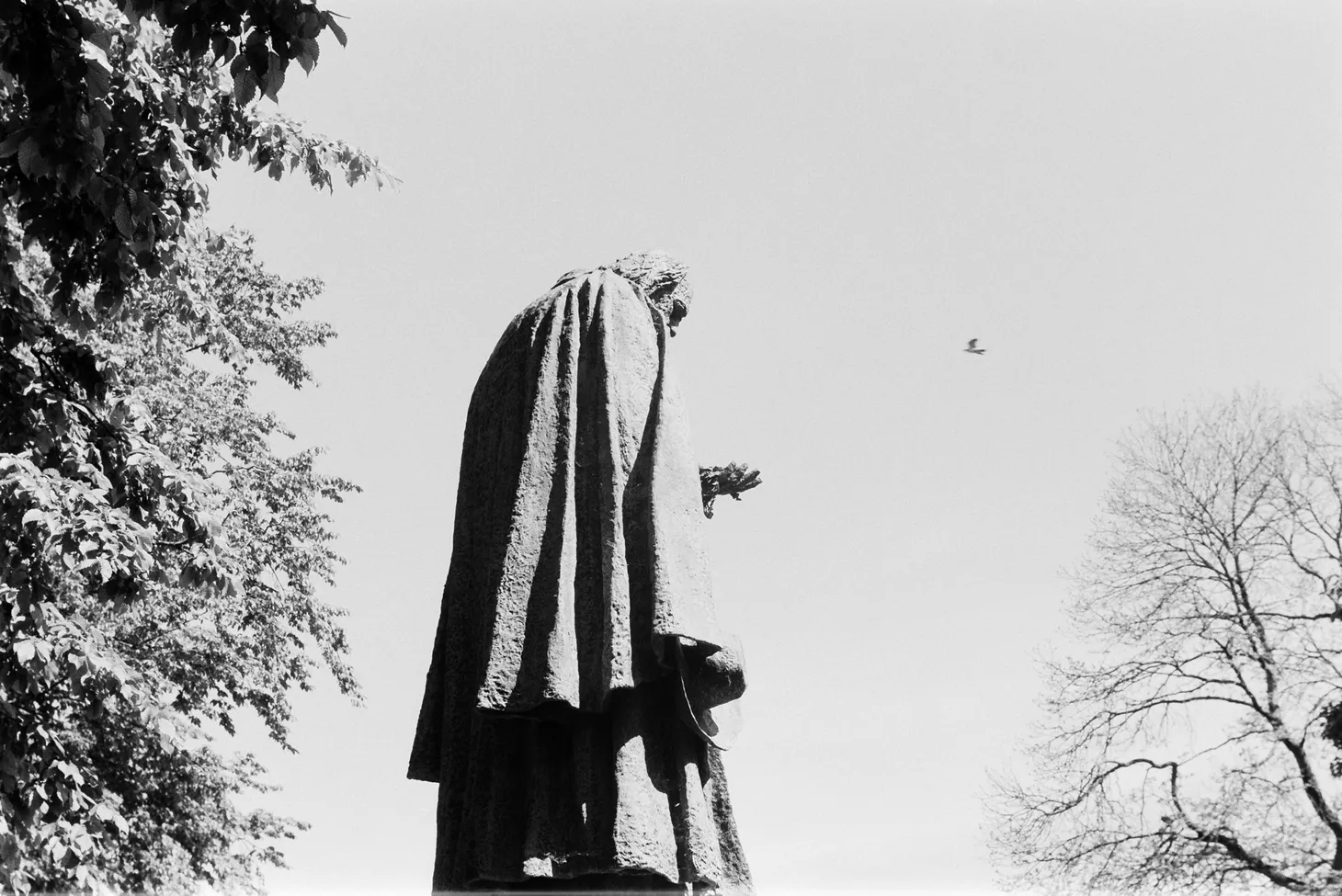Local woodland damage – an update
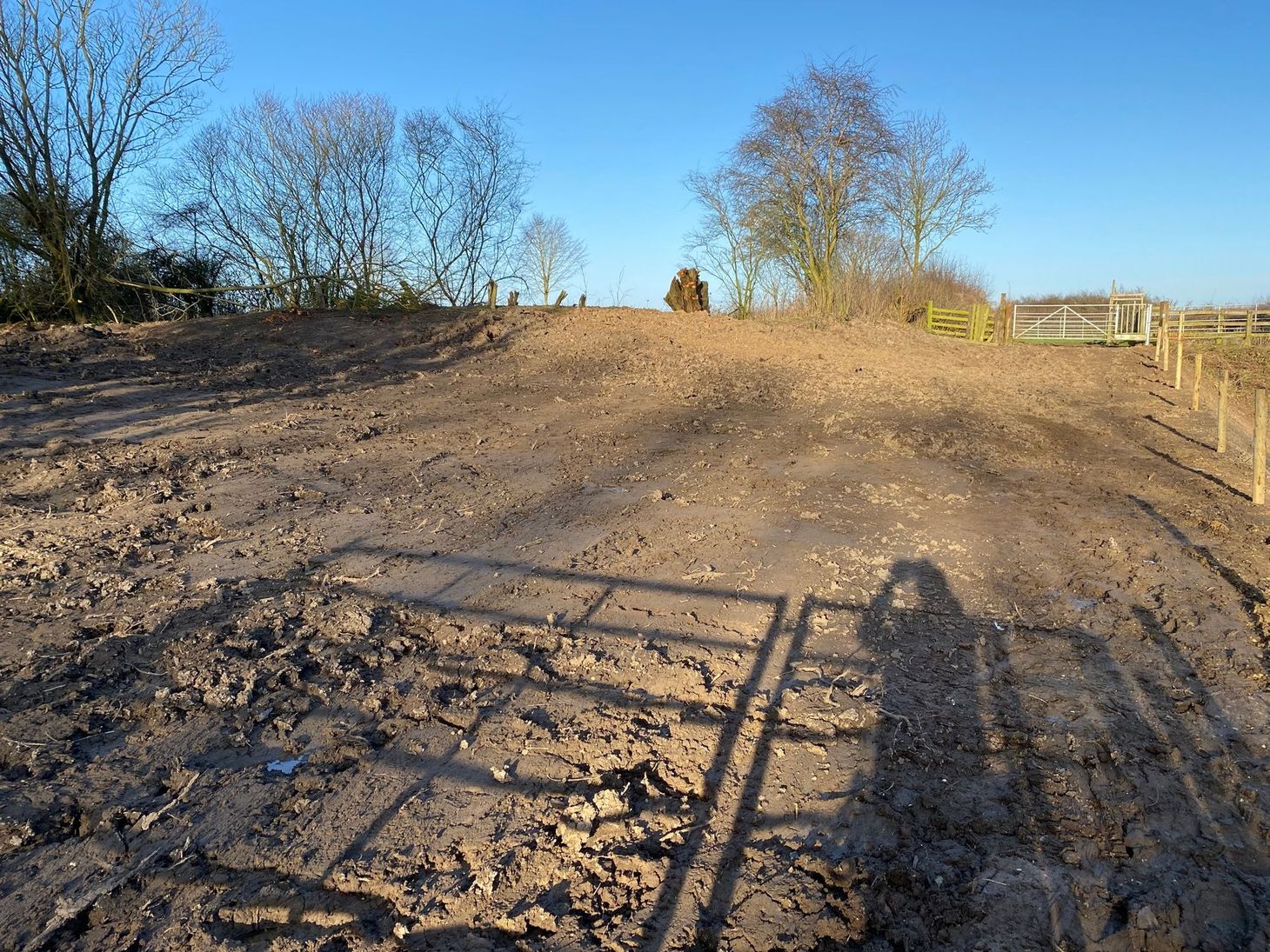
In January, I blogged about damage I’d witnessed to a local stand of woodland. Here’s an update, along with a record of what I’ve seen and the efforts I’ve made to find out what is happening.
There have been some developments. Here are the facts:
- A second visit revealed that the vehicle carrying out the work was the responsibility of the Lindsey Marsh Drainage Board. This is the body responsible for fen drainage in the local area.
- Further trees have been felled to a distance of about 5-6m away from the footpath. At least one very large tree has been felled.
- The large pile of cut timber I noted in my original post has now been burned on a bonfire, and most of the other debris has been cleared away.
- There’s been quite a bit of landscaping carried out. The drain and bank have both been resculpted. They’ve installed a new wife fence alongside the drain.
- A new gate has been installed about halfway along the public footpath.
- The public footpath sign has been moved in order to allow large vehicles to access the site from the adjacent road.
- The public footpath itself was closed for several days, but has now reopened.
Further images of the damage
It’s pretty ugly. I haven’t the heart to caption these, but you get the idea. A big chunk has been carved out of the wood and turned into a field of mud. Until a few weeks ago dense tree and shrub cover pressed closely against the public right of way, which is right on the edge of the drainage ditch.
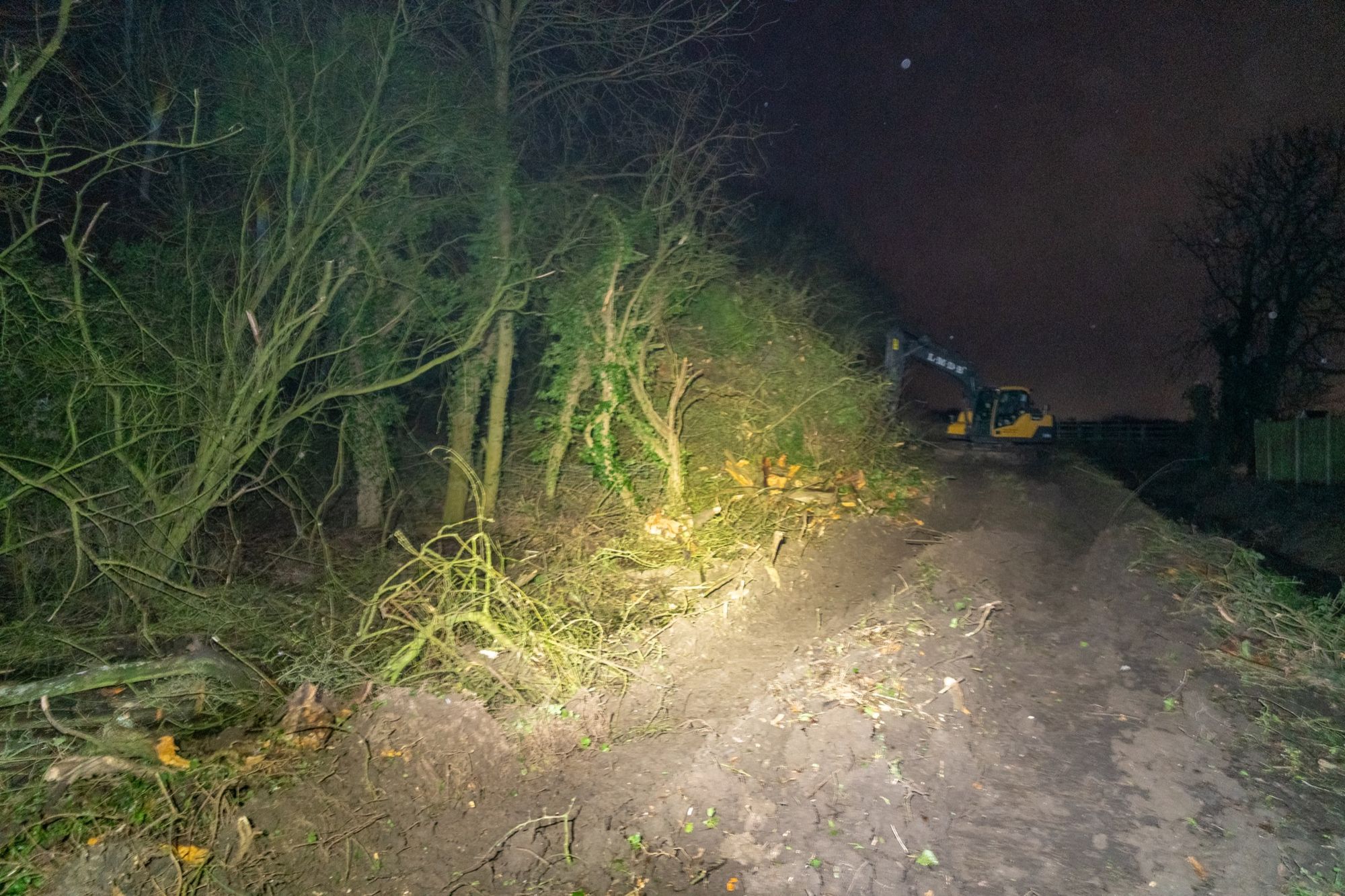
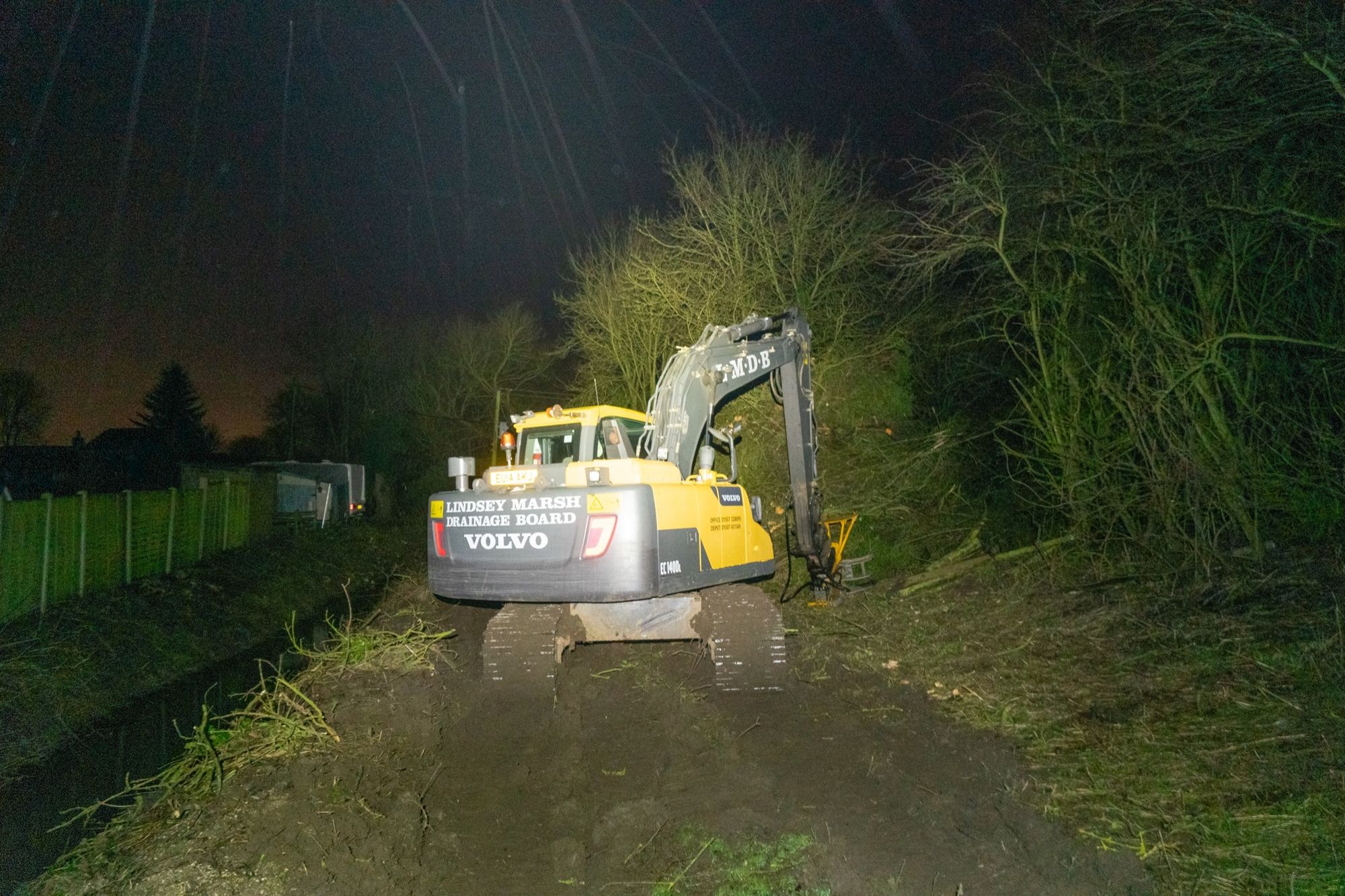
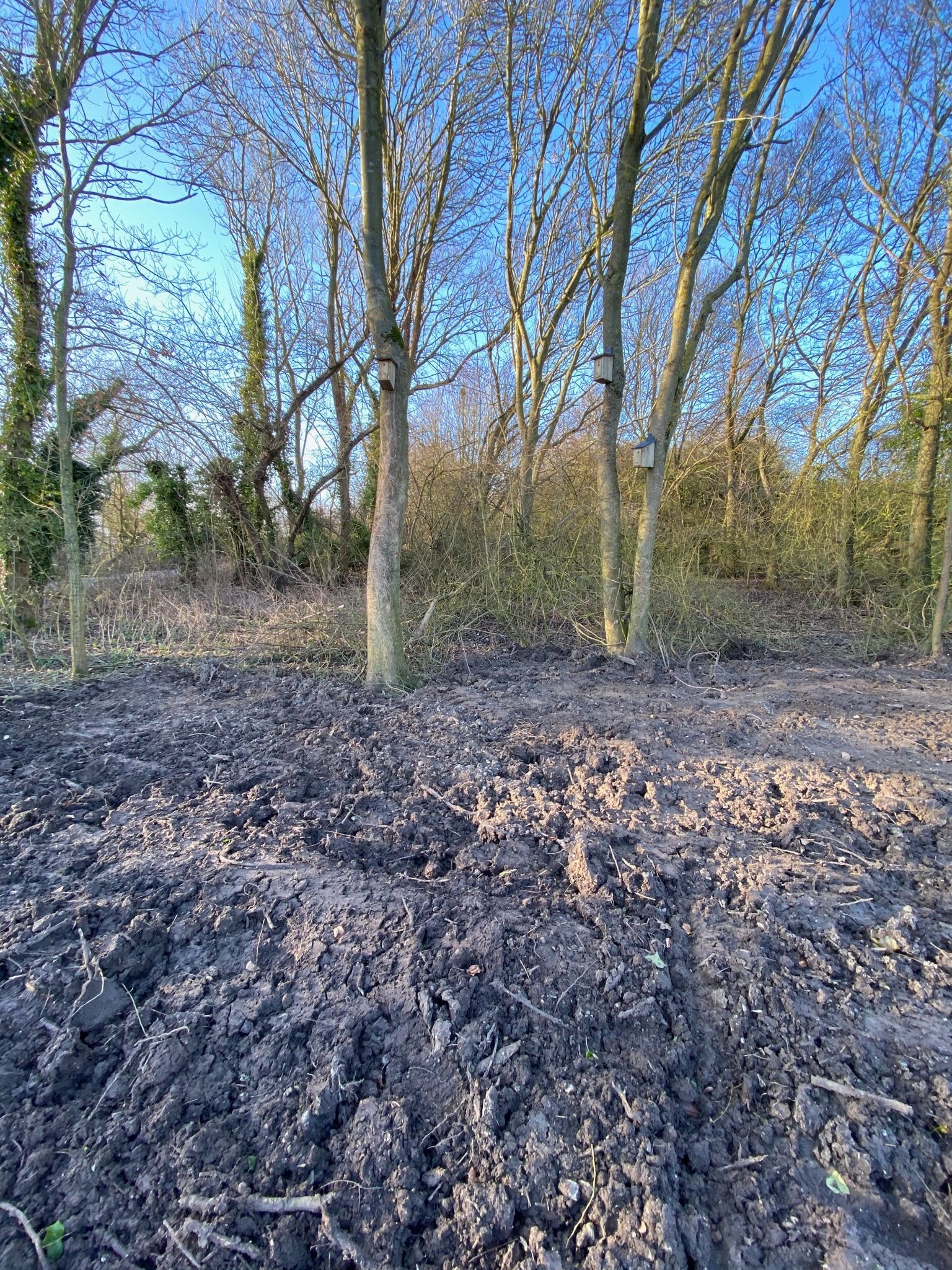

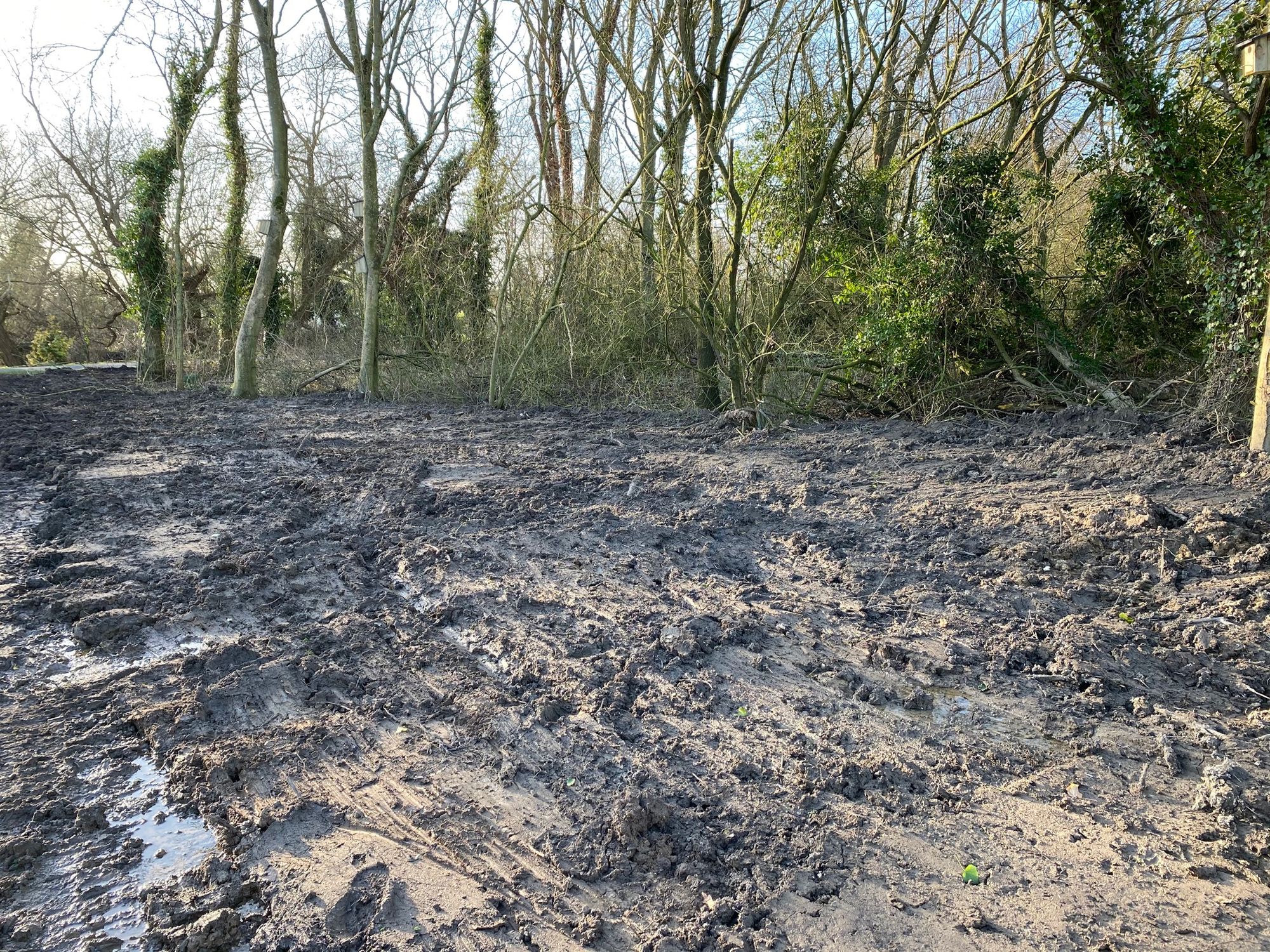
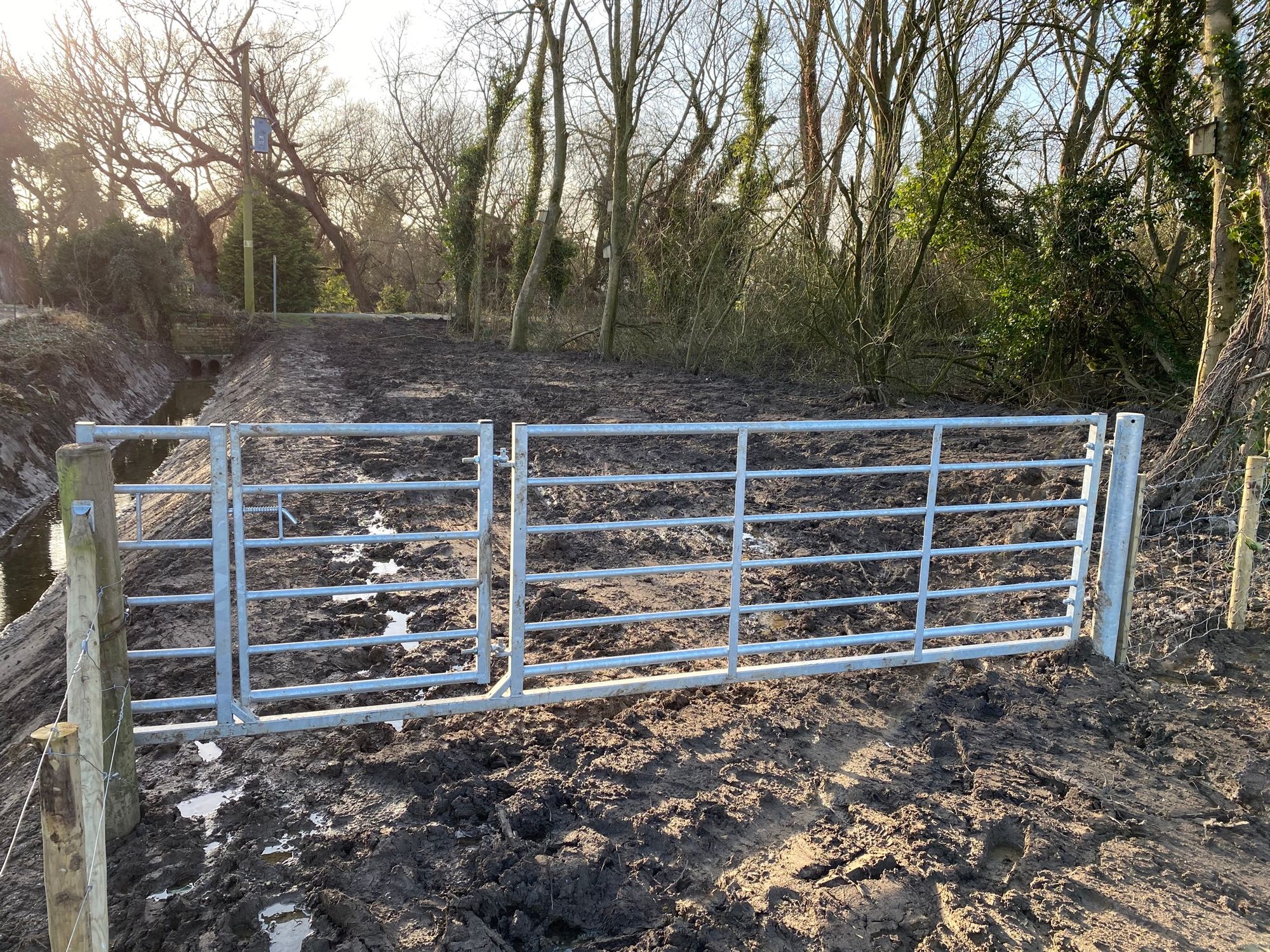
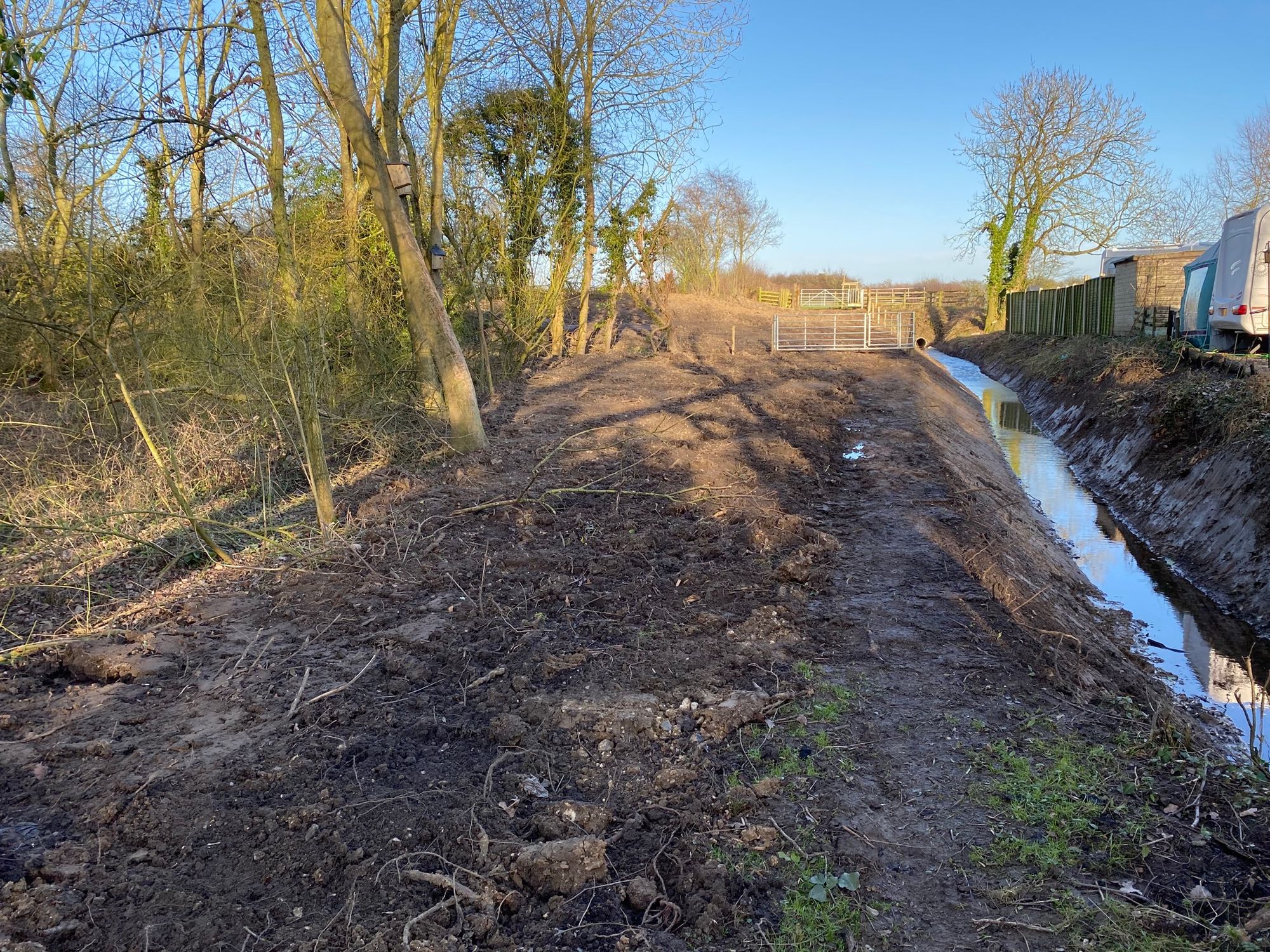
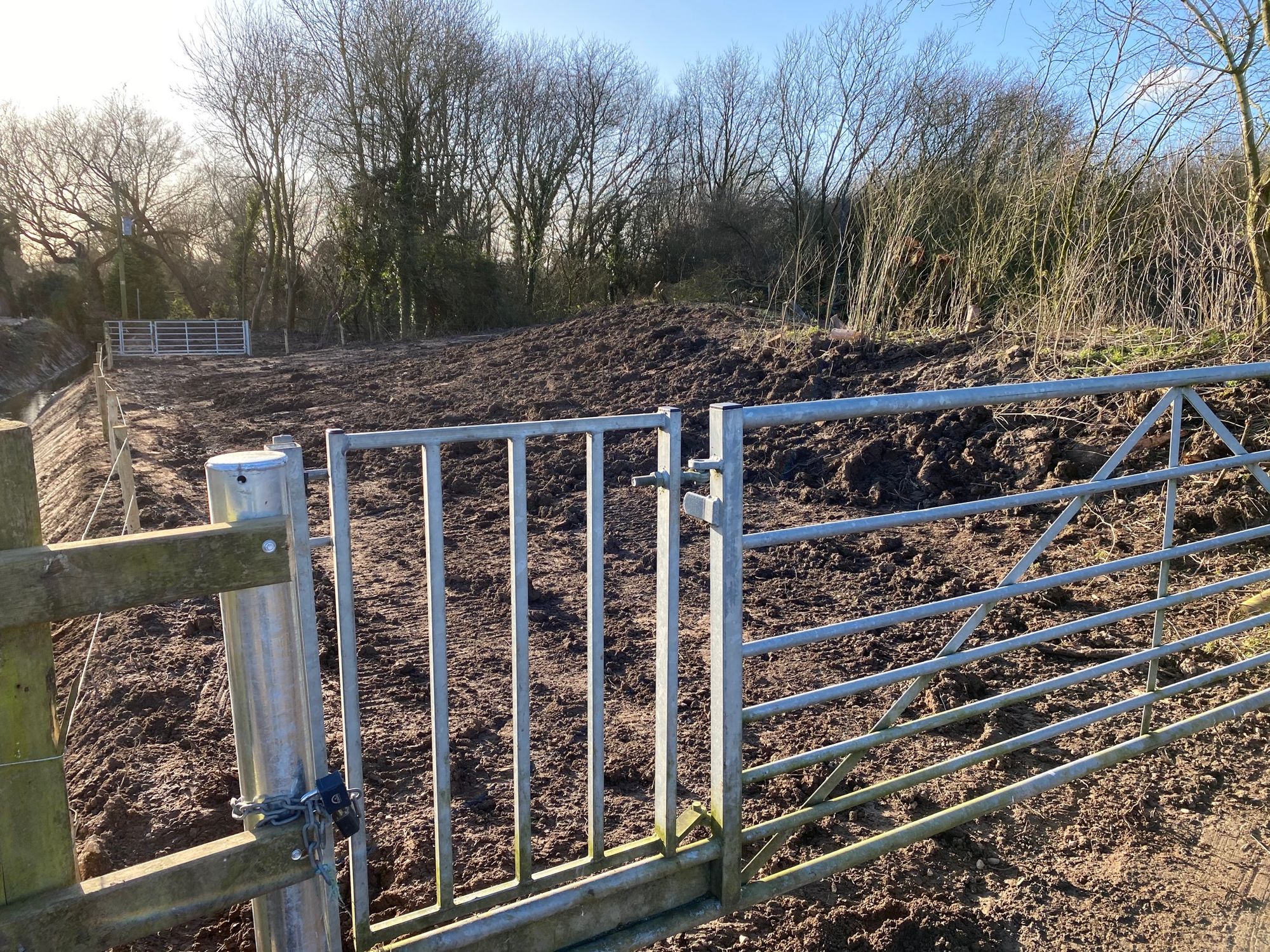
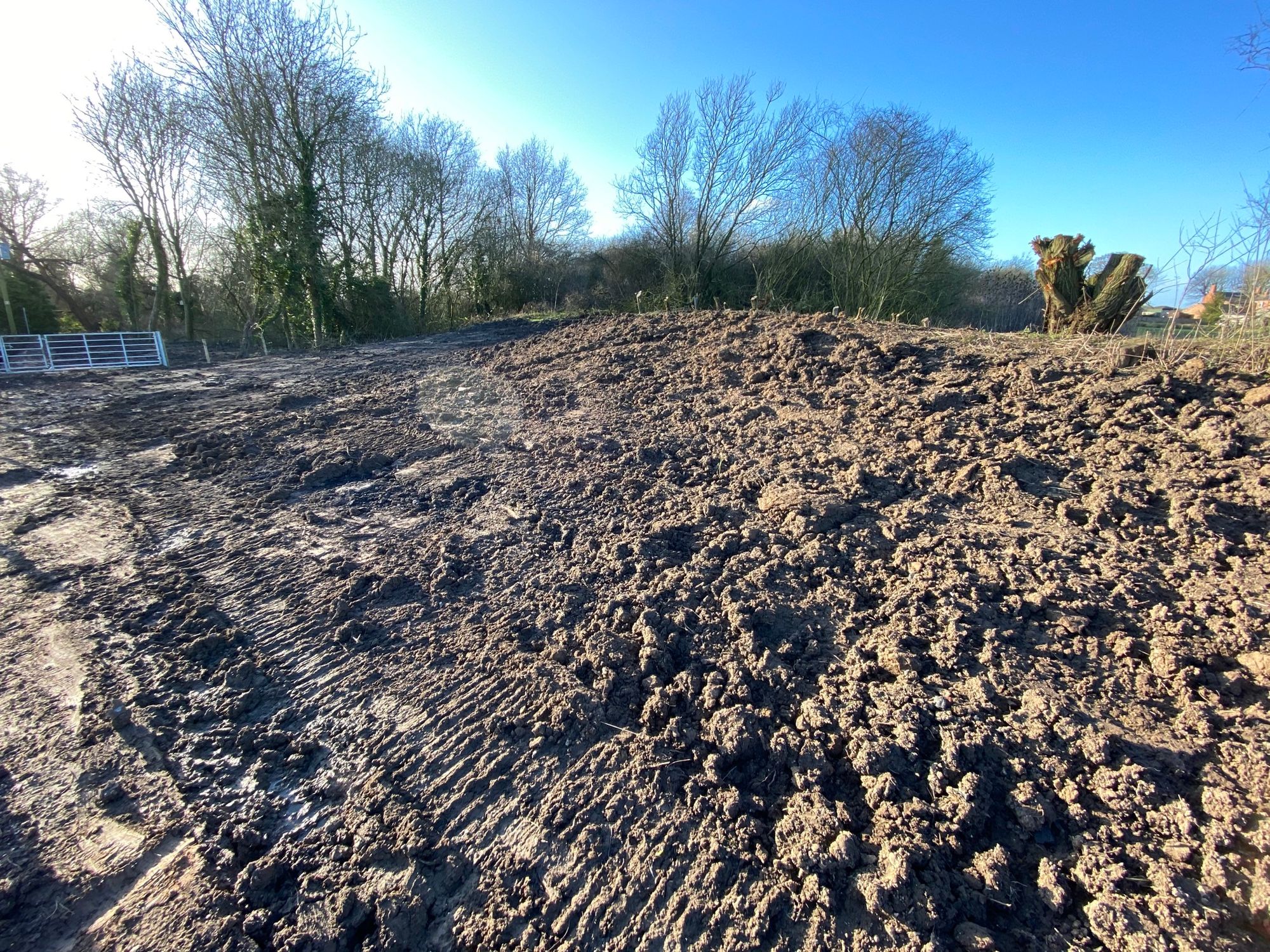
So what have you done about this, Alex?
It’s a fair question. We’re all used to hearing bad news about the environment, but in the vast majority of cases we’re powerless to do anything about it. But this is happening right on the edge of my village. I walk through here five times a week, and to be honest I was a little taken aback at how much the damage affected me. I decided that I would investigate.
I contacted the Lincolnshire Wildlife Trust with my concerns shortly after I first noticed the damage, and received this response:
Hi Alex! Hope you’re well. Just getting in touch with a response from our Conservation Officers about your local wood. We’ve checked our records this end and can’t find anything to say that it’s a planning application (so no buildings/roads/infrastructure going in). Saying that, the landowner wouldn’t need planning permission to ‘manage’ their woodland however they like. They would however need a felling license from the Forestry Commission for large scale tree removal of anything over a bean-can-size diameter. We can’t check FC licenses from our end so you’d need to get in touch with them directly to see if this is something they have given permission for. We’ve also checked if the area has any designations (Local Wildlife Site, Site of Special Scientific Interest etc.) which it doesn’t. It looks like it was an old gravel pit site which has since scrubbed over. It’s very sad but there’s nothing that we can do. Landowners are allowed to cut trees down (provided they have the right licence) unfortunately. All we can suggest at this stage is to check with FC whether they had a licence to do the work. I hope that helps, sorry there isn’t much more we can do. All the very best.
Fair enough! My next step – before I realised that the Lindsey Marsh Drainage Board was behind the work – was to contact the Forestry Commission to enquire whether a licence had been issued. I outlined the situation and received a prompt and polite reply:
Good Morning,
According to our records, this forest/ woods does not belong to us and therefore would not need our permission. If you have the Forest name, you may be able to find out online who looks after the care of the forest,
Kind Regards
On behalf of Forestry England
The following day, on my second visit since the work began, I noticed the Lindsey Marsh Drainage Board logo on the digger. I surmised that, rather than a landowner preparing land for development, this was probably something to do with fen drainage – a theory that would seem to be backed up by the presence of a drainage ditch running alongside the site.
This drain is dredged every year, and until now this has been done without vehicle access along its entire length. However, something has clearly changed; in addition to modifying the drainage ditch itself, the work seems to be all about creating a big enough entrance so that a lorry-sized vehicle can move freely up and down the length of the drain.
I decided to find out what I could about the LMDB and the work they might be conducting. At this point I should mention that my attitude changed significantly. When I’d assumed this was about preparing the site for private development (expanding the caravan park, maybe), I was spoiling for a fight and ready to dig my heels in. However, once I discovered the LMDB connection, I realised that the damage may be less arbitrary and gratuitous than I had originally thought. Maintaining fen drains in this low-lying area is important.
I am not an environmental fundamentalist – I understand that we must choose our battles. However, I was still appalled by the damage to this wood, and wanted to get to the bottom of what was happening.
The Lindsey Marsh Drainage Board’s environmental policy
A bit of sleuthing on the LMDB’s website uncovered this Environmental Impact Assessment for works to be carried out in 2019/20. Although some of these grid references are incorrect, I believe that the work titled ‘Wedlands Drain LMD032900’ (Burgh Le Marsh CP) may be the work in question here (if it isn’t, I don’t think this work is listed in this document). I have contacted the LMDB for confirmation. See under the next heading below for details of my correspondence with the Board.
Further relevant details from the environmental notice:
Works will involve the de-silting of the bed and re-grading of the banks on the above watercourses unless otherwise stated. All works will be carried out on one bank only which will be selected as necessary to minimise the environmental impact, following a technical and environmental survey.
From the LMDB’s page on their environmental policy (emphasis mine):
The Board has a policy to undertake all dredging and non-regular maintenance works from a single bank of a watercourse reducing disturbance to wildlife and to enabling [sic] the opposite bank to act as a wildlife refuge.
In this specific case, the other bank consists of a caravan park with a fishing lake, which means that the wildlife refuge itself has been heavily damaged.
Back to the Environmental Impact Assessment (again, emphasis mine):
The Board has undertaken an environmental appraisal and considers that the proposals are not likely to have a significant effect on the environment and does not, therefore, intend to prepare an Environmental Statement in respect of the works.
To summarise:
- I believe that the work was about de-silting and re-grading a watercourse, along with ‘improving access’.
- After conducting what seems to be an informal environmental appraisal, the LMDB did not consider it necessary to prepare a more formal Environmental Statement, because they believed the work would not have a significant impact on the environment.
I am not a qualified ecologist or naturalist, only a concerned nature writer, but I’d contest this assertion. I have witnessed rich plant life and a wealth of invertebrates and birds in the part of the wood that has been destroyed. While I’ve seen no evidence of anything particularly rare or notable, I’d like to think that any habitat destruction deserves to be considered soberly in the year 2020. It shouldn’t just be taken for granted that nature can cope with these small losses. Evidence suggests that it can’t.
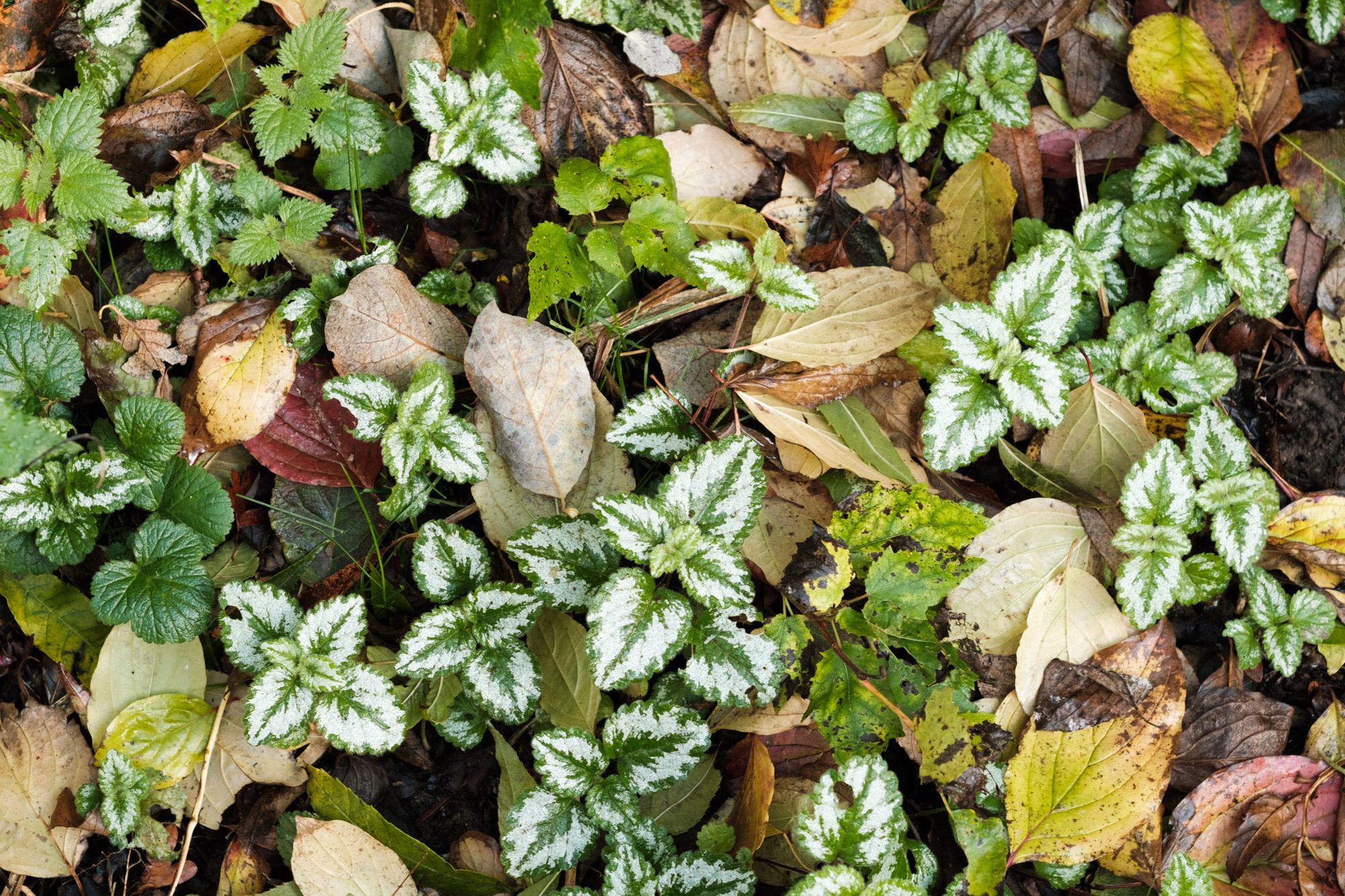
Maybe it comes down to a difference in point of view. Again, I understand that fenland drainage is important, but as a society do we really think it’s ok to bulldoze woodland unless it’s absolutely necessary? Perhaps it was needed after all, but to me the lack of a formal environmental impact assessment suggests a lack of care towards increasingly fragile natural systems, and an attitude out of step with the needs of the time.
If we always put nature second, the inevitable result is a planet where every natural process, every species, has been subjugated to human whims. A silent factory world. That’s a dystopian vision of the future, but it’s a future we’re sprinting towards right now, unless there are big changes in how we do everything. Too big a picture? Maybe, but the big picture is made up of tiny individual cases like this. Human choices and their consequences.
Correspondence with the LMDB
I will update this section when and if I hear back from Chris Manning.
I sent the following email to the LMDB on the 30th of January:
Hi,
I regularly walk on the public footpaths around Burgh-le-Marsh, and on the 16th of January I noticed that work was being carried out by the Lindsey Marsh Drainage Board on a drain near Gravel Pits Lane. A strip of woodland habitat several metres wide had been destroyed. Since then, the public footpath has been closed, some of the cut wood has been burned, there’s been some earth moved and a new gate has been installed.
I’m trying to get to the bottom of what is happening at the site, as I have concerns from an environmental point of view. In my years walking through this woodland I’d noticed a variety of birds, invertebrates, wildflowers and other plants in the strip of land directly adjacent to the dyke (bordering the footpath itself), all of which has now been destroyed. I have already contacted the Lincolnshire Wildlife Trust, but since the woodland isn’t a protected area it’s outside their influence.
I notice on the ‘Environmental’ section of your website that you aim to carry out works only on one bank of a drain, so that the opposite bank can be retained as a wildlife refuge. As I see it, the problem here is that the opposite bank is a fishing lake and caravan park – the damage has been done to the wildlife refuge itself. Although only a small percentage of the woodland has been destroyed, it seems to have caused quite a lot of damage. I must stress that I’m not a qualified ecologist, though, just a concerned nature writer (and nature lover).
Are you able to fill me in on the nature of the work that’s being carried out, and whether any environmental survey was done beforehand? Are there any plans for restoring the site after the work has been completed?
Looking forward to your reply,
On the 3rd of February, I received this reply from Emily Jackson, Admin Assistant:
Good morning
I have contacted Chris Manning, our Environmental Officer, with your concerns. We will be in touch shortly, thank you for contacting us
Kind regards
I have not heard anything further from them. Next week I’ll send them a gentle nudge. I’m keen to keep the discourse civil here, because this is not a simple narrative of woodland being steamrollered for economic development. However, I am keen to learn something about the thinking behind why a formal environmental assessment was not needed in this case – and I would certainly like to know how they plan to restore the site.
In several of my images, nesting boxes are visible in the trees just at the edge of the destroyed area. At some point, someone once decided that wildlife deserved a helping hand in this small, unremarkable, but also very precious patch of woodland. I’d like to think that this site can be treated with a similar degree of care again in the future.
Alex Roddie Newsletter
Subscribe here to receive my occasional personal newsletter in your inbox. (For the fun stuff, please consider subscribing to Alpenglow Journal instead!)



